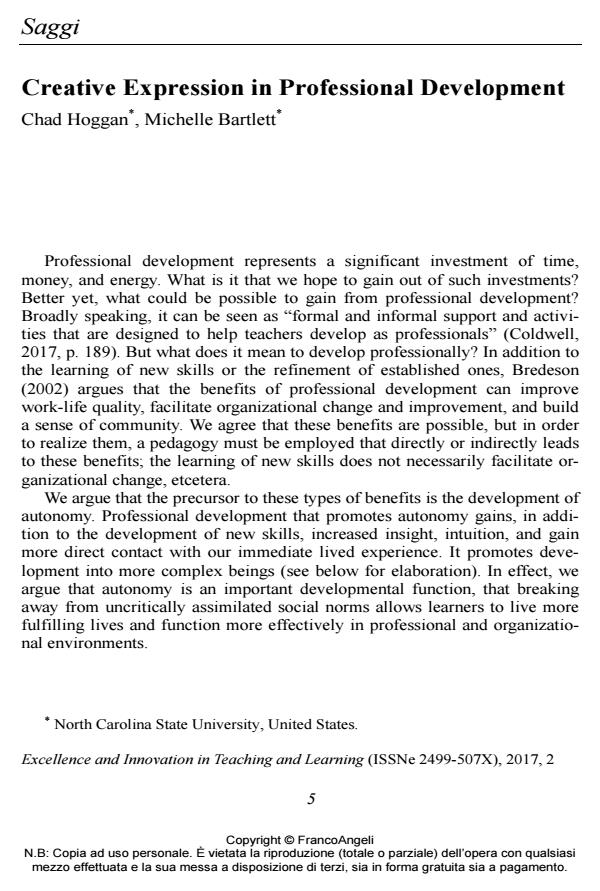Creative Expression in Professional Development
Titolo Rivista EXCELLENCE AND INNOVATION IN LEARNING AND TEACHING
Autori/Curatori Chad Hoggan, Michelle Bartlett
Anno di pubblicazione 2017 Fascicolo 2017/2
Lingua Inglese Numero pagine 11 P. 5-15 Dimensione file 163 KB
DOI 10.3280/EXI2017-002001
Il DOI è il codice a barre della proprietà intellettuale: per saperne di più
clicca qui
Qui sotto puoi vedere in anteprima la prima pagina di questo articolo.
Se questo articolo ti interessa, lo puoi acquistare (e scaricare in formato pdf) seguendo le facili indicazioni per acquistare il download credit. Acquista Download Credits per scaricare questo Articolo in formato PDF

FrancoAngeli è membro della Publishers International Linking Association, Inc (PILA)associazione indipendente e non profit per facilitare (attraverso i servizi tecnologici implementati da CrossRef.org) l’accesso degli studiosi ai contenuti digitali nelle pubblicazioni professionali e scientifiche
Educational theorists have long touted the developmental benefits of engaging in creative endeavors, such as photography, creative writing, and so forth, yet few professional development programs incorporate creative expression into their curricula. This article briefly reviews the work of Fromm, Marcuse, Jung, and Heron to explore possible justifications and explanations of the developmental and organizational benefits that are possible from creative expression. This article argues that a unifying premise of these theorists is that creative expression promotes autonomy. It concludes by providing an example of how a pedagogy utilizing creative expression can meet immediate learning objectives in addition to the longer term outcome of increased autonomy and discusses how such pedagogies can be incorporated into professional development programs.
Parole chiave:Professional development; creative expression; autonomy; arts; organizational learning
Chad Hoggan, Michelle Bartlett, Creative Expression in Professional Development in "EXCELLENCE AND INNOVATION IN LEARNING AND TEACHING" 2/2017, pp 5-15, DOI: 10.3280/EXI2017-002001